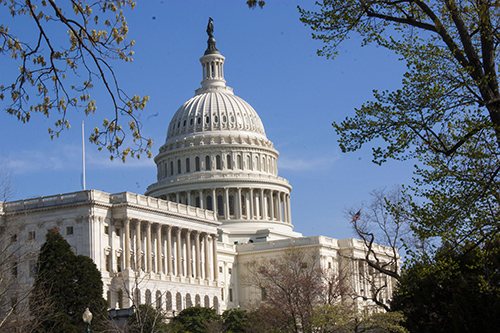Prior to leaving town before the weekend, Congress managed to pass legislation which will result in a band-aid solution to the mounting air traffic delays experienced by flyers over the past week. The Federal Aviation Administration (FAA) and the U.S. Department of Transportation (DOT), now with the flexibility under sequestration to move money between internal accounts, have already announced that they have suspended all employee furloughs. Air traffic facilities will begin to return to regular staffing levels over the next 24 hours and the system will resume normal operations by Sunday evening.
result in a band-aid solution to the mounting air traffic delays experienced by flyers over the past week. The Federal Aviation Administration (FAA) and the U.S. Department of Transportation (DOT), now with the flexibility under sequestration to move money between internal accounts, have already announced that they have suspended all employee furloughs. Air traffic facilities will begin to return to regular staffing levels over the next 24 hours and the system will resume normal operations by Sunday evening.
The legislation, once signed by President Obama, allows the FAA to move $253 million from the Airport Improvement Program (AIP) account to the operations account effectively putting an end to the furloughs of all air traffic controllers and potentially allowing continued operations at the 149 Contract Control Towers that were scheduled for closure on June 15th.
While many in the aviation community applauded Congress for taking action, the National Association of State Aviation Officials (NASAO) is deeply disappointed that this fix only delays the pain of sequestration until the end of the fiscal year on September 30, 2013 and very concerned that Congress chose an unprecedented raid on the AIP account to fund an operations account. “The AIP program was thoughtfully established by Congress to keep all the airports in our national, integrated air transportation system safe and efficient,” said NASAO President, Henry Ogrodzinski on Friday. “At the current allocation of $3.5 billion, it already falls short of meeting the long-term infrastructure needs of America’s airports. AIP should not be used as a piggy-bank to solve the problems created by the sequestration cuts mandated by Congress and the Administration.”
Ogrodzinski said state government aviation agencies, all across the country, hope that this is the last time Congress finds it necessary to spend AIP dollars on programs that it was not designed to fund. “NASAO looks forward to working with Congress, the Administration and FAA to finding genuine, long-term solutions to today’s challenges and keeping the national air transportation system the safest and most efficient in the world”, Ogrodzinski said.
The Aircraft Owners and Pilots Association (AOPA) praised Congress for passing legislation that would give the FAA the flexibility to make more measured decisions about spending cuts, including staffing and contract towers. Some in Congress have stated that this flexibility has always been available to the FAA.
“Through their strong support for this measure, both the House and Senate have made it clear that the safety and efficiency of our aviation system is a priority,” said Craig Fuller, AOPA president and CEO. “All of us who fly are grateful for their efforts.”
NBAA’s President and CEO, Ed Bolen, said they applaud congressional leaders for moving in a bipartisan, bicameral way to keep these towers open. “As we have said so many times before, the towers are integral in ensuring that America’s aviation system remains the safest, largest and most efficient in the world.”
The Senate passed its measure unanimously on Thursday, with the House approving its bill by a vote of 361 to 41 on Friday.
For states like Oklahoma, with five contract towers, this was good news indeed. “The fact that Congress was able to draft this bill and get it passed by both houses within 24 hours gives us hope that Washington can still do the peoples’ work and fix problems,” said Aeronautics Commission Director Victor Bird. “Let’s face the facts. If these furloughs and tower closures were allowed to continue it would have affected the safety of the traveling public, the economy that depends upon the efficient air transportation of people and goods and even the everyday leisure traveler.”
One thing to note is this fix is not the end all solution to fixing the Sequester for FAA. This is simply a stop-gap measure to end the controller furloughs through the end of the fiscal year. And even at that, there is no guarantee that the 149 contract towers on the chopping block will remain open past their June 15th close date. Pressure to keep these towers open must still be applied, both for the short term past June 15th and a longer term solution that extends for FY2014 and beyond.
The U.S. DOT and FAA have said all along that they had no option but to close these towers because of a lack of funding. “I would suggest to Secretary LaHood and Administrator Huerta that the funding issue has been cleared up,” said Bird. “Therefore the towers can and should remain open through the end of September. We must continue to press for a long-term fix to the contract tower and controller furlough issue as we will undoubtedly have to deal with this issue again as the fiscal year comes to a close.”



